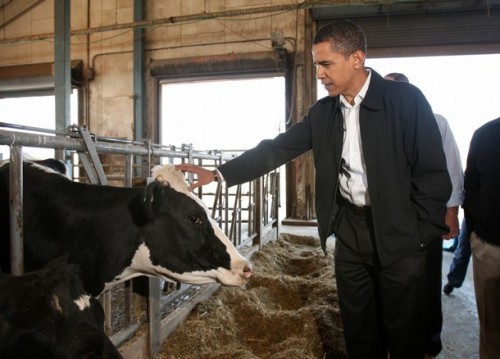Animal Production: White House Issues Plan to Fight Drug-Resistant Bacteria
Coordinated federal and state effort against superbugs would seek to curb use at farms, hospitals

The White House on Friday issued the most extensive plan ever to fight drug-resistant bacteria, or superbugs, seeking to curb antibiotic use at farms and hospitals—and promote discovery of lethal bugs and antibiotics to kill them.
The plan, formally known as the National Action Plan for Combating Antibiotic-Resistant Bacteria, sets goals to reduce by 50% to 60% illnesses caused by some of the most lethal microbes known to man by 2020. It seeks enhanced laboratory capacity across the U.S. to detect the worst pathogens, and it calls on federal agencies to set new rules aimed at curbing dangerous microbes.
The Obama administration’s strategy, which can mostly be achieved through agency regulations and guidance but needs Congress to appropriate the funds, envisions federal and state agencies engaging in coordinated efforts, all largely based on the idea that whatever is measured can be managed.
“It is the boldest move against antibiotic resistance by any U.S. administration ever,” said Kevin Outterson, a Boston University law professor, researcher and author on antibiotic resistance. He predicted the initiative, along with voluntary efforts by companies such as McDonald’s Corp. and Costco Wholesale Corp. to reduce the use of meat from animals routinely fed antibiotics “will actually bear fruit quickly.”
Sen. Lamar Alexander (R., Tenn.), chairman of a key Senate committee on health issues, said, “The President has focused on a real concern….The Senate health committee already is working to help spur the development of new and effective antibiotics. I look forward to reviewing the details of the President’s plan.”

Some doctors noted that there have previously existed similar, but lower-profile, interagency plans regarding drug resistance at the Food and Drug Administration and other U.S. health agencies. But in this case, they noted, President Barack Obama’s budget calls for an additional $1.2 billion to be spent in the effort and, if enacted by Congress, that money can potentially make a difference.
Drug-resistant bacteria are responsible for some two million illnesses annually in the U.S. alone, and more than 23,000 deaths. Recent outbreaks at U.S. hospitals after routine scope-diagnostic procedures have made the threat from superbugs more vivid in the public’s mind.
John H. Powers, a George Washington University medical professor, generally praised the plan but said it “needs to be more patient-focused, not bug-focused.” He called on federal officials, for instance, to gauge patient outcomes and see if they improve with new measures and antibiotics. Dr. Powers has noted that current law carries rewards to companies that develop antibiotics even when they haven’t been tested specifically against drug-resistant bugs.
The White House plan proposes eliminating a farming practice in which cows, chickens and other food animals receive antibiotics to help them gain weight faster. This overuse is widely believed to have contributed to drug resistance.

In late 2013, the FDA asked drug companies to voluntarily stop using antibiotics to promote animal growth. The Obama plan says the Agriculture Department should finance the development of alternatives to antibiotics that are used to treat diseases in livestock and poultry and promote growth.
The White House effort comes as a number of meat processors and restaurant chains have voluntarily moved to reduce or eliminate antibiotics use in their meat supply in response to consumer preferences, rather than any regulations.
Meat and animal-drug-industry officials said the Obama administration plan largely matched what the industry is already doing to comply with the 2013 FDA guidance.
“Most of the [Obama administration] plan outlines actions that are already well under way,” said Tom Super, spokesman for the National Chicken Council, which represents poultry companies.
Some public-health groups criticized the Obama administration for not doing more to curb the use of antibiotics in poultry and livestock. Mae Wu, an attorney at the Natural Resources Defense Council, said the drugs should be used only to treat animals that are sick.

“The plan continues to allow the routine feeding of antibiotics to animals that live in the crowded conditions endemic to industrial farms,” Ms. Wu said.
Steven Gordon, chairman of infectious diseases at the Cleveland Clinic, said the number of antibiotics prescribed to human patients when they haven’t been needed has been increasing in recent years, and he hailed the plan as “elevating this issue to a level we haven’t seen before.”
Other specifics in the initiative include calling for states to set up programs to combat drug resistance. Within five years, it urges, all 50 states plus the District of Columbia and Puerto Rico should have such programs in place. It also urges the Centers for Disease Control and Prevention to double tuberculosis screening among migrants to prevent the importation of multi-drug-resistant tuberculosis.
